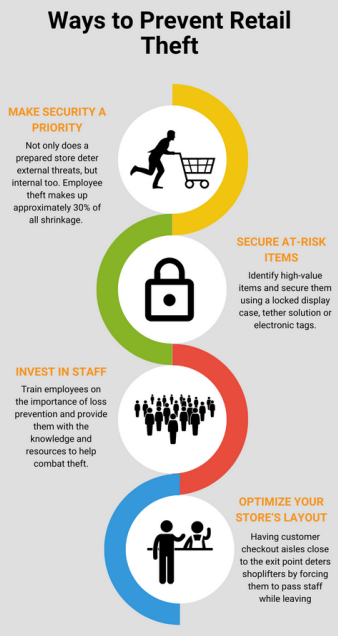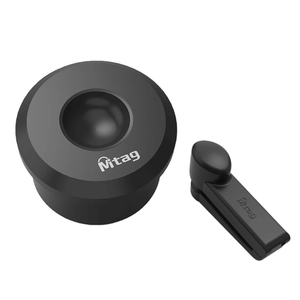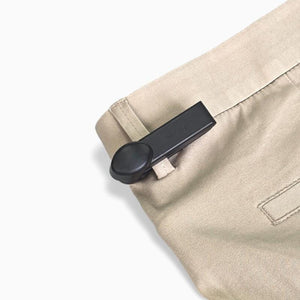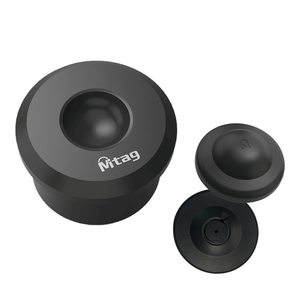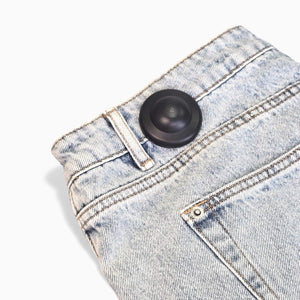Are you one of the many businesses suffering from the recent rise in thefts? There are solutions out there that won't cost you an arm and a leg.
Picture the scene: due to a recent rise in thefts, your store is having trouble displaying its merchandise. You’re hesitant to put out more inventory, as this risks it being stolen, but then this creates issues with drawing in customers.
What are some of the ways to prevent shoplifting, and how can the cost be balanced against the return on investment? In this guide, we’ll look at how to stop shoplifting with various retail loss prevention strategies. We’ll also look at some theft prevention devices for retail.
What is Loss Prevention in Retail?
If you’re wondering how to prevent theft in a retail store, loss prevention provides a range of tools and retail loss prevention strategies to protect your stock from being stolen.
There are a number of ways to prevent shoplifting in a retail store. Here we’ll explore a few.
The Risks of Merchandise Theft
Shoplifting or retail theft, whether you sell clothing, sports equipment, consumer electronics or something else, is never ideal. Aside from the actual act of theft, other knock-on issues can impact a store’s performance. These include:
- Staff safety. A store that’s prone to theft risks its staff’s safety. Staff constantly in the firing range can lead to higher staff attrition. While employees should never intervene in a theft, the more it happens, the more the risk of escalation increases.
- Extra paperwork. Although the processes may differ, stores always have some kind of theft paperwork. If staff are spending more time filling this in, it means less time spent making sales.
- Lost inventory. This is a no-brainer, but thefts mean lost inventory, lower stock availability, and wasted money.
- Effect on displays. Stolen display merchandise in retail results in a significant lost opportunity for sales. Retailers invest in creating attractive displays to catch the attention of potential customers. Not being able to display different models, colours or sizes represents a missed chance to convert potential sales into revenue.
- Company’s reputation. A store that’s prone to theft will develop a reputation to match this fact. Whether this deters honest customers or attracts potential thieves, it’s not a reputation you want attached to your business.
In short, merchandise theft is a distraction for staff away from everyday retail tasks, and that is something all stores want to avoid. But if you’re having a problem with increased thefts, what are some of the ways to prevent shoplifting in a retail store? Let’s look at a few simple theft prevention devices for retail.

Security Tags: The Easiest Anti-Theft Deterrent
Security tags are the simplest theft prevention device for retail. Understandably, larger companies can be put off by the process of researching and buying security tags, and then paying someone to come install them.
However, with a security tag upgrade, you don’t have to worry about anyone installing the gates as many new and improved security tags are designed to work with existing gates and the frequency they are set at.
Security tags like Mitag use multipolar magnets for detaching, meaning they can’t be detached by any other magnet available on the market today. They have compatibility with all existing security gates which means they’re simple to install, they have inherent scalability and they can last for years

Security Tethers: Anti-Theft Deterrent for Display Merchandise
Display products help attract customers. These displays, particularly those that are nearer to the door, are prime targets for theft. Companies are looking for better ways to secure this high-value merchandise, as when it is stolen, it can’t be put on display, and they can’t sell the stock in the back room. The value of tethering these high-value items is that it helps secure the products to the shelf or rack, and serves to deter undesirables from entering the store.
The point of security tethers is to provide more protection for products and to deter “undesirables” from entering the store. Simply put, the presence of a tether on an item is enough to prevent someone from stealing it, and it shows the store has obvious security measures in place. While they are designed to stop someone from physically removing an item from a shelf or rack, they’re still easily removed using the detacher by one of the trained customer sales staff.
Finding the Right Security for Your Merchandise
Leading Solutions has an extensive range of security tags that are ideal for larger companies in Australia and New Zealand.
Please do not hesitate to get in touch if you have any questions or need any further information.
